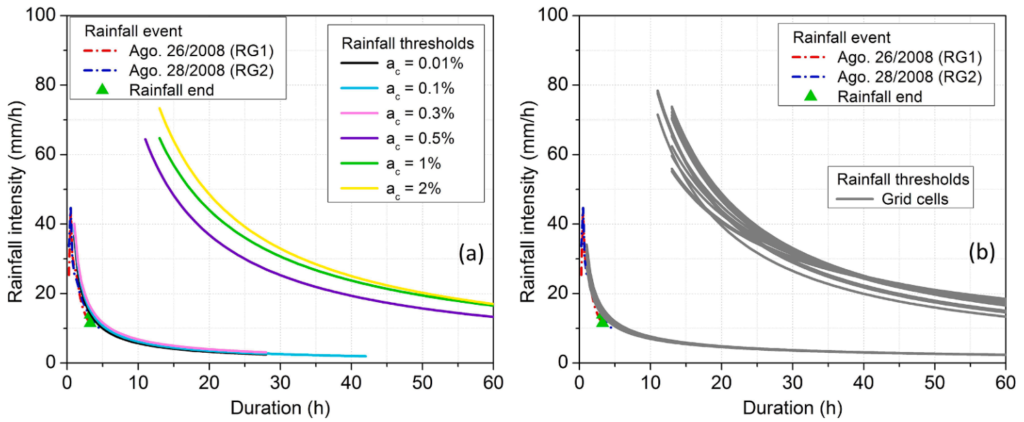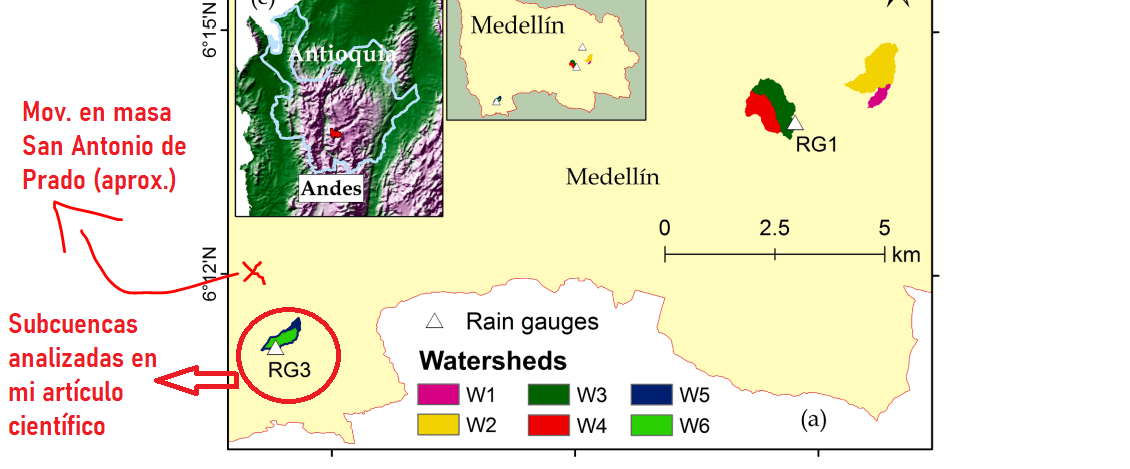It is a challenge for landslide researchers to evaluate the predictive accuracy of critical thresholds for landslides. In fact, we can even spend all our lives contributing wonderful advancements without predicting one single landslide. I don’t want to think about it with a negative perspective, mostly when I am right now responsible for the landslide early warning system of Manizales, Colombia.
When I arrived here (some months ago), the thresholds (25 days-antecedent precipitation) that were used were those developed by Terlien (1996) in his doctorate research, in Manizales. I will not remove immediately what is used here (I don’t even decide those things). In fact, it is widely accepted in Manizales that those thresholds have worked good in general terms (considering what is expected from them). Do not think I am criticizing anything. In fact, it was a wonderful, magnificent work by Mark Terlien over 26 years ago, considering everything! (some of you cannot imagine how things work in Colombia). We are now defining new thresholds for this city with a robust and very competent scientific work.
In this blog, I have to cite our research work trying to validate physically based rainfall intensity-duration thresholds for shallow landslides in data-scarce environments:
Assessing two methods of defining rainfall intensity and duration thresholds for shallow landslides in data-scarce catchments of the Colombian Andean Mountains (Journal Catena, Q1).
In this paper we tried to compare thresholds defined using methods M1 (https://doi.org/10.1016/j.geomorph.2019.106976) and M2 (https://doi.org/10.1007/s10346-020-01481-9) with reconstructed rainfall events (that presumably triggered the landslides) in Medellin, Colombia.

Figure 1. Rainfall thresholds for a watershed from Medellín using: (a) method M1 and (b) method M2 (Marin et al., 2021).
A big problem is that we can just compare one rainfall event with the thresholds we defined for the study areas. We don’t have records of other landslides in such a small watershed . That’s what we have but we still want to define thresholds for a very important task: save lives!
What would you do? Let me know any scientific suggestion. This is valuable because we are focused on saving lives. We want to explore the best methods. Of course, I just showed some results from a paper, but we have done many other things.
Now I have to tell the saddest part. Unfortunately, a landslide caused death of two people in a rural area in San Antonio de Prado, Medellin (July 13, 2022). Dave Petley described this event in his blog: https://blogs.agu.org/landslideblog/2022/07/14/san-antonio-de-prado-1/
I published an edited figure clarifying that the watershed we analysed in our research paper was not the same of the landslide event. But I claimed publicly that in Colombia (and specifically in Medellin) we have tried to help authorities, risk managers, the early warning system (SIATA), and many others to deal with such an important subject (save lives!), and minor attention has been given. There are better efforts that researchers/academics, authorities (government/state) and private companies can do to move forward together. LandScient is totally committed because this is our reason for being.

Figure 2. Study site and rainfall thresholds for a watershed from San Antonio de Prado (Medellín) using: (a) method M1 and (b) method M2 (Marin et al., 2021).
References:
Marin R.J., Velásquez M. F., García E. F., Alvioli M., Aristizábal E. (2021) Assessing two methods of defining rainfall intensity and duration thresholds for shallow landslides in data-scarce catchments of the Colombian Andean Mountains. CATENA, 206, 105563. https://doi.org/10.1016/j.catena.2021.105563
Marin, R. J., Velásquez, M. F. (2020). Influence of hydraulic properties on physically modelling slope stability and the definition of rainfall thresholds for shallow landslides. Geomorphology 351:106976. https://doi.org/10.1016/j.geomorph.2019.106976
Marin R. J. (2020) Physically based and distributed rainfall intensity and duration thresholds for shallow landslides. Landslides, 17, 2907–2917. https://doi.org/10.1007/s10346-020-01481-9
Marin R. J., García-Aristizábal E., Aristizábal E. (2020). Effect of basin morphometric parameters on physically-based rainfall thresholds for shallow landslides. Engineering Geology, 278, 105855. https://doi.org/10.1016/j.enggeo.2020.105855


